Forgotten Ancient Kingdom Of Tuwana Is Hidden Among Ruins In Cappadocia
A. Sutherland - AncientPages.com - The familiar saying that the conquerors write history applies well to the forgotten ancient kingdom of Tuwana that was more or less erased from history. It was once a prosperous kingdom of great importance, but its history is lost in time today.
 The Hittities. The kingdom of Tuwana arose in the wake of the Hittite empire’s fall. Image credit: www.smithsonianchannel.com
The Hittities. The kingdom of Tuwana arose in the wake of the Hittite empire’s fall. Image credit: www.smithsonianchannel.com
It is still possible for Tuwana to gain proper historical recognition now that the ruins of this ancient and powerful kingdom were discovered in Cappadocia, Turkey.
How Tuwana Became A Rich And Powerful Kingdom
During the ninth and eighth centuries BC, the kingdom of Tuwana rose to prominence under a series of kings. Unfortunately, only a few of them are known from inscriptions.
Tuwana derives its name from the Late Bronze Age Tuwanuwa, one of the cities of the Hittite Lower Land. Tuwana was the largest and most important kingdom of the southern Tabal region of Anatolia. Tabal was a Luwian-speaking neo-Hittite 'state' that emerged from the Hittite empire's collapse.
The kingdom of Tuwana arose after the Hittite empire's fall. It became one of the city-states that helped fill the power vacuum in Turkey.
 Ruins in Cappadocia. Image credit: travelpromotionsturkey.com
Ruins in Cappadocia. Image credit: travelpromotionsturkey.com
Tuwana gained a strong position between the Phrygian and Assyrian empires. Tuwana facilitated trade throughout Anatolia and, as a direct result, the kingdom of Tuwana. As a result, it accumulated significant wealth. It was a wealthy kingdom with a strong economy and used a hieroglyphic language called Luwian. Later, the people of Tuwana adopted the alphabetical Phoenician script.
Tuwana lost its importance and greatness when the Assyrian Empire expanded westward and took control of all city-states.
Uncovering The Kingdom Of Tuwana In Cappadocia
The kingdom of Tuwana was practically unheard of and forgotten for a long time. Then, in 2012, archaeologists excavating a considerable site in southern Cappadocia, Turkey, uncovered the ruins of Tuwana.
Researchers from the University of Pavia and NY, who studied the site of ancient Tuwana, consider it part of the forgotten kingdom of Tuwana". Tiwana was only known from hieroglyphics and several sources from the Assyrian Empire, but the site was investigated archaeologically for the first time.
 Inscription in hieroglyphic Luwian script. ron Age II, 8th century BC, basalt - Oriental Institute Museum, University of Chicago.
Inscription in hieroglyphic Luwian script. ron Age II, 8th century BC, basalt - Oriental Institute Museum, University of Chicago.
Tuwana was one of the significant sites in terms of size in pre-classical Anatolia. The discovery of a massive city believed to be the base of Tuwana's power is changing the region's history.
With such a large and well-preserved find, archaeologists can finally piece together the story of this powerful and wealthy kingdom, which controlled trade through the Cilician Gates for several centuries.
In the second half of the 8th century BC, the king in Tuwana was Warpalawas II, son of Muwaharani I. These were times of strong influence from the kingdom of Mushki, ruled by King Mita (also identified as Midas of Phrygia).
Phrygia's power is seen in two Old Phrygian inscriptions found in Kemrhisar and by bronze objects of clear Phrygian origin in a tumulus at Kaynarca, seven kilometers northeast of Tyana.
Later, when the Phrygian kingdom and the kingdom of Urartu to the east fell to the Cimmerians, the kingdom of Tuwana disappeared.
Written by – A. Sutherland AncientPages.com Staff Writer
Updated on January 16, 2024
Copyright © AncientPages.com All rights reserved. This material may not be published, broadcast, rewritten or redistributed in whole or part without the express written permission of AncientPages.com
Expand for referencesMore From Ancient Pages
-
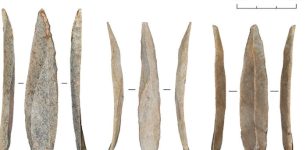 Mass Production Of Stone Bladelets Led To A Cultural Shift In Paleolithic Levant
Archaeology | Jan 7, 2023
Mass Production Of Stone Bladelets Led To A Cultural Shift In Paleolithic Levant
Archaeology | Jan 7, 2023 -
 Native American Sun Dance: Important Ceremony Of The Plains Indians Of North America
Ancient History Facts | May 20, 2016
Native American Sun Dance: Important Ceremony Of The Plains Indians Of North America
Ancient History Facts | May 20, 2016 -
 Ancient Indigenous Carvings On Boab Trees – Time To Rescue Ancient Art Before Trees Disappear
Archaeology | Oct 12, 2022
Ancient Indigenous Carvings On Boab Trees – Time To Rescue Ancient Art Before Trees Disappear
Archaeology | Oct 12, 2022 -
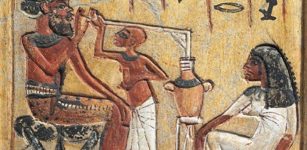 5,000 Years Old Beer Enjoyed By Egyptian Pharaohs Recreated
Archaeology | May 23, 2019
5,000 Years Old Beer Enjoyed By Egyptian Pharaohs Recreated
Archaeology | May 23, 2019 -
 Solar Eclipses And New Attempt To Date Homer’s Iliad And Odyssey
Myths & Legends | Jan 7, 2016
Solar Eclipses And New Attempt To Date Homer’s Iliad And Odyssey
Myths & Legends | Jan 7, 2016 -
 Mungo Man Finally To Rest In Peace After 42,000 Years – Reburial Approved After Federal Decision
News | Apr 8, 2022
Mungo Man Finally To Rest In Peace After 42,000 Years – Reburial Approved After Federal Decision
News | Apr 8, 2022 -
 ‘Green’ Saudi Arabia Was Home To A 350,000-Year-Old Human Settlement
Archaeology | May 18, 2021
‘Green’ Saudi Arabia Was Home To A 350,000-Year-Old Human Settlement
Archaeology | May 18, 2021 -
 Ancient People Dressed Baby Boys In Blue To Ward Off Evil Spirits
Ancient History Facts | Mar 5, 2019
Ancient People Dressed Baby Boys In Blue To Ward Off Evil Spirits
Ancient History Facts | Mar 5, 2019 -
 Seppuku: Ancient Suicide Ritual That Guaranteed Honorable Death Instead For Life In Shame
Ancient Traditions And Customs | Mar 8, 2018
Seppuku: Ancient Suicide Ritual That Guaranteed Honorable Death Instead For Life In Shame
Ancient Traditions And Customs | Mar 8, 2018 -
 First Settlers Of Ancient Peru Left Behind 12,000-Year-Old Stone Objects
Archaeology | Mar 16, 2018
First Settlers Of Ancient Peru Left Behind 12,000-Year-Old Stone Objects
Archaeology | Mar 16, 2018 -
 Home Of The Gods – Arrival Of Golden Ships – Part 1
Ancient Mysteries | Jun 12, 2018
Home Of The Gods – Arrival Of Golden Ships – Part 1
Ancient Mysteries | Jun 12, 2018 -
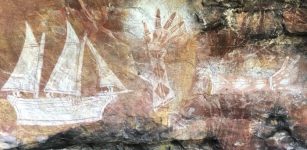 Map Of Hidden NT Landscape Where First Australians Lived More Than 60,000 Years Ago
Archaeology | May 5, 2023
Map Of Hidden NT Landscape Where First Australians Lived More Than 60,000 Years Ago
Archaeology | May 5, 2023 -
 Ancient Treasure Hidden In Perplexing Secret Underground Labyrinth In France – Discovery And Forbidden Excavations – Part 2
Ancient Mysteries | Jan 19, 2020
Ancient Treasure Hidden In Perplexing Secret Underground Labyrinth In France – Discovery And Forbidden Excavations – Part 2
Ancient Mysteries | Jan 19, 2020 -
 On This Day In History: Cyrus The Great And His Army Took Babylon – On Oct 12, 539 BC
News | Oct 12, 2016
On This Day In History: Cyrus The Great And His Army Took Babylon – On Oct 12, 539 BC
News | Oct 12, 2016 -
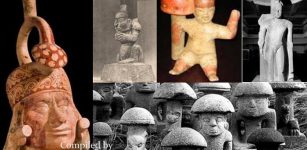 Mysterious Ancient Mushrooms In Myths And Legends: Sacred, Feared And Worshiped Among Ancient Civilizations
Featured Stories | Apr 26, 2023
Mysterious Ancient Mushrooms In Myths And Legends: Sacred, Feared And Worshiped Among Ancient Civilizations
Featured Stories | Apr 26, 2023 -
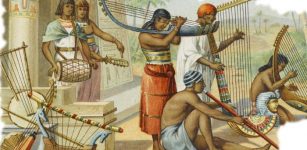 How Important Was Music In Ancient Egypt?
Ancient History Facts | Jan 16, 2021
How Important Was Music In Ancient Egypt?
Ancient History Facts | Jan 16, 2021 -
 World’s Oldest Wooden Structure Discovered And It Predates Homo Sapiens – Archaeologists Say
Archaeology | Sep 20, 2023
World’s Oldest Wooden Structure Discovered And It Predates Homo Sapiens – Archaeologists Say
Archaeology | Sep 20, 2023 -
 On This Day In History: Taoist Monk Discovers Dunhuang Manuscripts In Mogao Caves, China – On June 25, 1900
News | Jun 25, 2016
On This Day In History: Taoist Monk Discovers Dunhuang Manuscripts In Mogao Caves, China – On June 25, 1900
News | Jun 25, 2016 -
 The Untold Story Of Mexico’s Ancient Giant Indians – Cunning Plan And The Evil Nation – Part 2
Ancient Mysteries | Sep 23, 2019
The Untold Story Of Mexico’s Ancient Giant Indians – Cunning Plan And The Evil Nation – Part 2
Ancient Mysteries | Sep 23, 2019 -
 Enoch – The Initiator – Pre-Flood Messenger Of God
Ancient Mysteries | Oct 5, 2015
Enoch – The Initiator – Pre-Flood Messenger Of God
Ancient Mysteries | Oct 5, 2015
